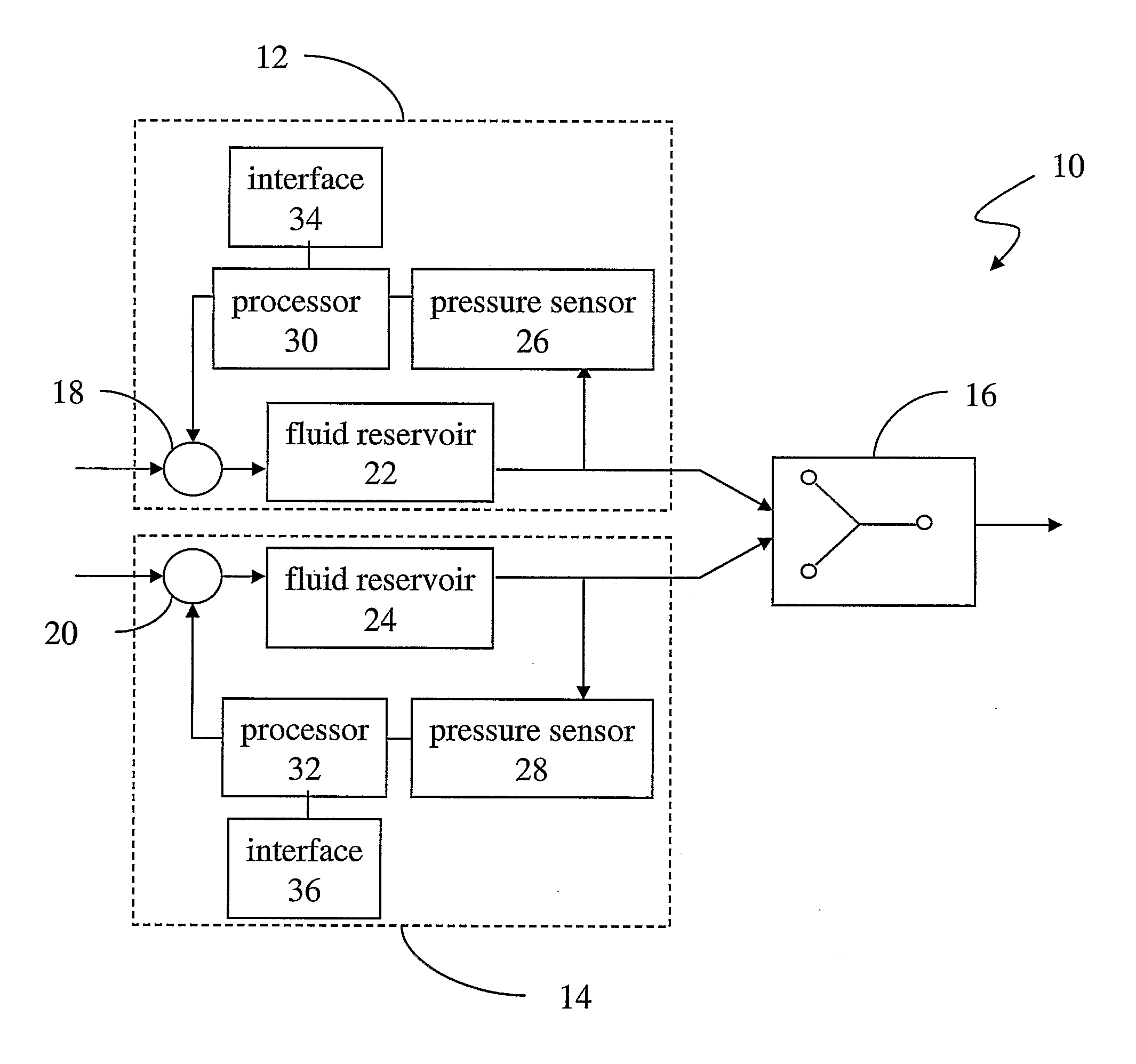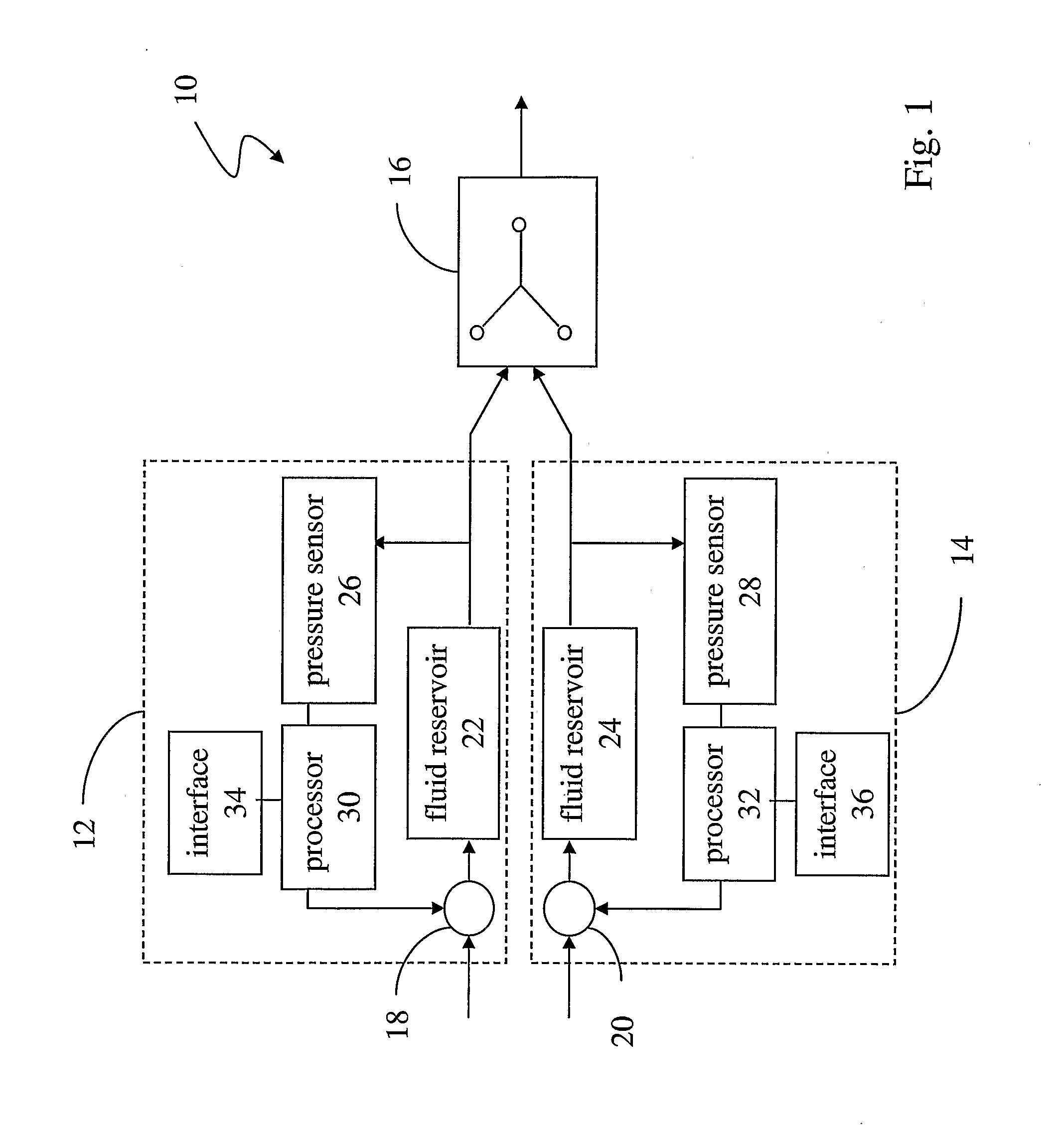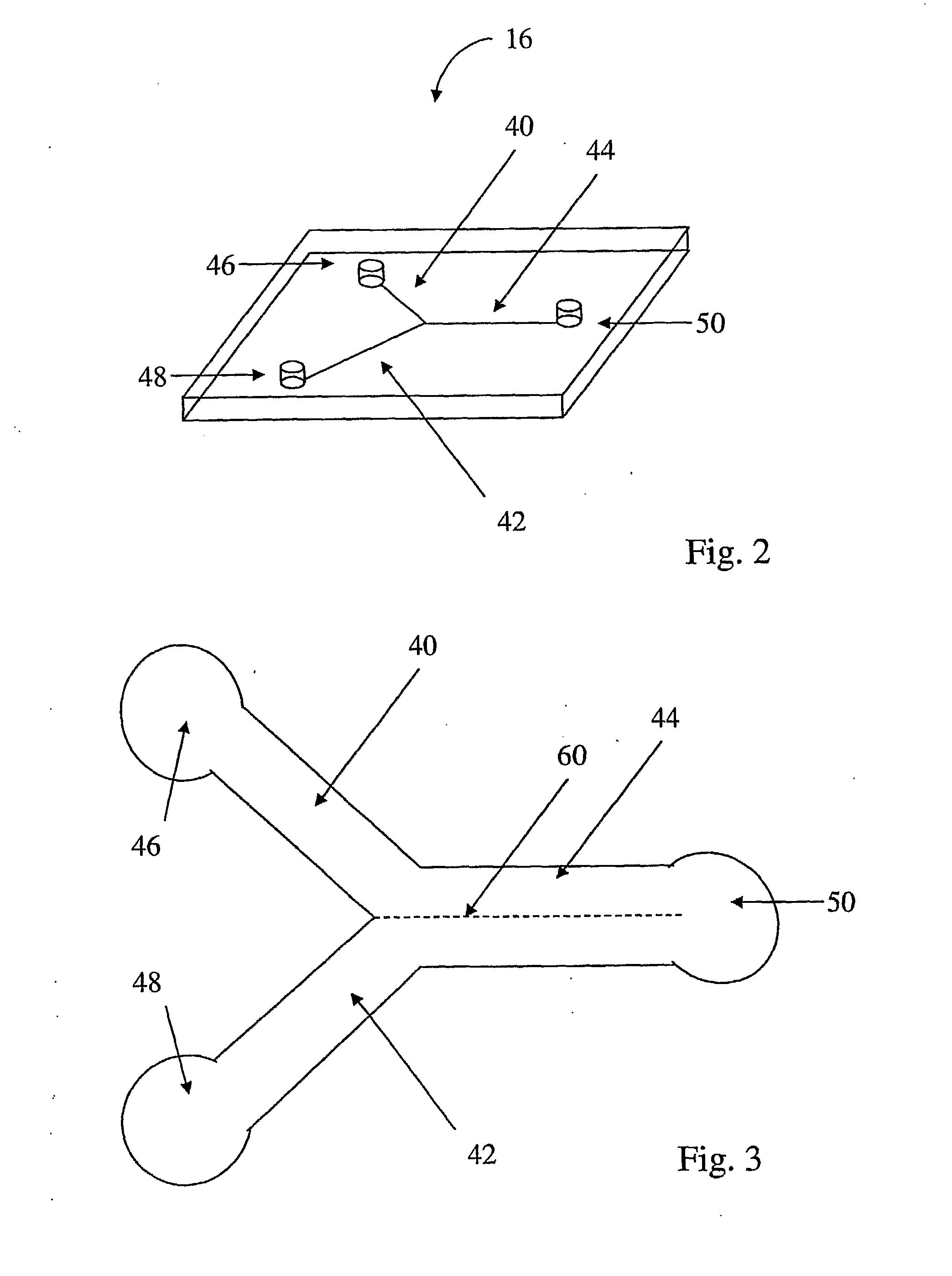Apparatuses, Systems, and Methods Utilizing Laminar Flow Interface Control and for Controlling Laminar Flow Interface
- Summary
- Abstract
- Description
- Claims
- Application Information
AI Technical Summary
Benefits of technology
Problems solved by technology
Method used
Image
Examples
Embodiment Construction
[0043]The present invention is generally applicable to the field of fluidics, and is particularly relevant to the field of microfluidics and the control of a laminar flow interface. The present invention will generally be described in terms of controlling the chemical environment of a cell. However, the present invention is relevant to a much wider range of technologies and applications, such as the manufacture and operation of microdevices or Microsystems such as micro-electromechanical systems, semiconductor fabrication, molecular self-assembly, and other technologies and applications.
[0044]In one embodiment, the present invention can be used for actively controlling cells' chemical environments with subcellular precision and time-domain variability. For example, the present invention can be used to aid the transmission of time varying chemical signals to cells. Because the fluid flow is incompressible at certain pressures, including those used in these applications, flow rate thr...
PUM
 Login to View More
Login to View More Abstract
Description
Claims
Application Information
 Login to View More
Login to View More - Generate Ideas
- Intellectual Property
- Life Sciences
- Materials
- Tech Scout
- Unparalleled Data Quality
- Higher Quality Content
- 60% Fewer Hallucinations
Browse by: Latest US Patents, China's latest patents, Technical Efficacy Thesaurus, Application Domain, Technology Topic, Popular Technical Reports.
© 2025 PatSnap. All rights reserved.Legal|Privacy policy|Modern Slavery Act Transparency Statement|Sitemap|About US| Contact US: help@patsnap.com



